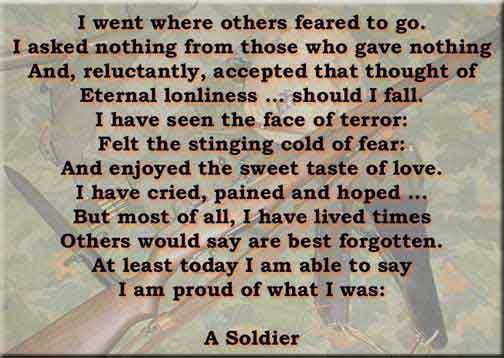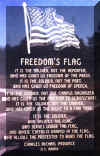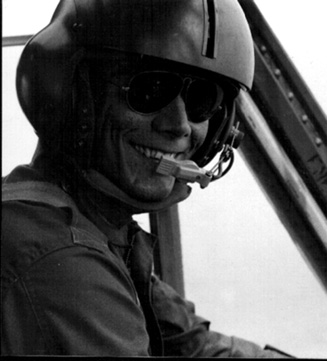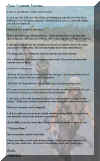

Poems/Graphics
![]()
For All of Us

![]()
The two poems below "Who
Stands Alone" and "I've Got Your Back!"
were submitted March 2003.
Michael Marks is the author of "Who Stands
Alone" is also the author of "A Soldier's
Christmas" posted on the Christmas Poems
page.
The poem "I've Got Your Back!" was
submitted by SSG Roy Chaney (B Company) and a few days later by Joe Killen (NIDA
Treasurer). The author is unknown.
-WEBMASTER'S note: SSG Roy Chaney and I served together in 1st Platoon, B Company - 1969-
![]()
Who Stands Alone
Eleven thousand soldiers lay beneath the dirt and stone,
all buried on a distant land so far away from home.
For just a strip of dismal beach they paid a hero’s price,
to save a foreign nation they all made the sacrifice.

And now the shores of Normandy are lined with blocks of white,
Americans who didn’t turn from someone else’s plight.
Eleven thousand reasons for the French to take our side,
but in the moment of our need, they chose to run and hide.
Chirac said every war means loss, perhaps for France that’s true,
for they’ve lost every battle since the days of Waterloo.
Without a soldier worth a damn to be found in the region,
the French became the only land to need a Foreign Legion.
You French all say we’re arrogant. Well hell, we’ve earned the right--
We saved your sorry nation when you lacked the guts to fight.
But now you’ve made a big mistake, and one that you’ll regret;
you took sides with our enemies, and that we won’t forget.
It wasn’t just our citizens you spit on when you turned,
but every one of ours who fell the day the towers burned.
You spit upon our soldiers, on our pilots and Marines,
and now you’ll get a little sense of just what payback means.
So keep your Paris fashions and your wine and your champagne,
and find some other market that will buy your aero planes.
And try to find somebody else to wear your French cologne,
for you’re about to find out what it means to stand alone.
You see, you need us far more than we ever needed you.
America has better friends who know how to be true.
I’d rather stand with warriors who have the will and might,
than huddle in the dark with those whose only flag is white.
I’ll take the Brits, the Aussies, the Israelis and the rest,
for when it comes to valor we have seen that they’re the best.
We’ll count on one another as we face a moment dire,
while you sit on the sideline with a sign “friendship for hire.”
We’ll win this war without you and we’ll total up the cost,
and take it from your foreign aid, and then you’ll feel the loss.
And when your nation starts to fall, well Frenchie, you can spare us,
just call the Germans for a hand, they know the way to Paris.
March 2003
Michael Marks
marksman@patriot.net
In the wake of 9-11 and our war against the authors of terror, France
set out to not only oppose us, but to humiliate our nation, and most
specifically our President, in the eyes of the world. Perverting a role
in the UN that they were given, not one which they earned, France made
it clear that they would oppose or veto any U.S. measure that could
provide realistic protection of our national security. Such
backstabbing cannot come without a price. Across America, citizens are
saying no to French products and French tourism, putting their
patriotism ahead of personal preference. Montana announced a statewide
sell-off of French elements in their pension fund. It is time for all
Americans to rise to this example. It is our economic engine that feeds
the world, our soldiers who defend it. It is time for us to recognize
the great value of our true allies and cut the strings to those who
sell us out. Let those who badmouth America be forced to show how smart
they are and make it on their own.
![]()
I’ve
Got Your Back! (Original name: "Proud")
(There are two versions of this Poem
- the one shown immediately below, and the one that follows. The original author
is unknown and the second rendition of the Poem has an additional stanza that
your webmaster added and Michael Marks refined at my request.)
Webmaster Note 12/26/2004: Autumn Parker, Ft. Campbell, KY
is the author
I am a small and precious child, my dad's been sent to fight.
The only place I'll see his face, is in my dreams at night.
He will be gone too many days for my young mind to keep track.
I may be sad, but I am proud. My daddy's got your back.
I am a caring mother. My son has gone to war.
My mind is filled with worries that I have never known before.
Everyday I try to keep my thoughts from turning black.
I may be scared, but I am proud. My son has got your back.
I am a strong and loving wife. With a husband soon to go.
There are times I'm terrified in a way most never know.
I bite my lip and force a smile as I watch my husband pack.
My heart may break, but I am proud. My husband's got your back.
I am a soldier. Serving proudly, standing tall.
I fight for freedom, yours and mine by answering this call.
I do my job while knowing the thanks it may at times lack.
Say a prayer that I'll come home. It's me who's got your back!
-Always
Remember-
IT
IS THE SOLDIER....
It
is the soldier, not the reporter,
Who has given us freedom of the press.
It is the soldier, not the poet,
Who has given us freedom of speech.
It is the soldier, not the campus/political organizer,
Who has given us the freedom to demonstrate.
It is the soldier,
Who salutes our flag,
Who serves beneath our flag,
Whose coffin is draped by our flag,
Who allows the protester to burn our flag.
BY:
Father Denis Edward O'Brien, USMC
LET’S
REMEMBER THOSE WHO HAVE FOUGHT, DIED AND ARE
STILL SERVING FOR OUR EVERYDAY FREEDOMS.
Webmaster Note 12/26/2004: "It Is The Soldier"

This photo is from a veteran memorial in NE
Kansas (I believe). The sculptor changed the title to "FREEDOM'S
FLAG."
Freedom
is NOT free!
![]()
He’s
Got Your Back!
(As amended from the original poem written
by Autumn Parker "Proud" - see
below)
(by Michael Marks and Richard
Coogan)
I am a small and precious child. My dad's been sent to fight.
The only place I'll see his face is in my dreams at night.
And he’ll be gone too many days for my young mind to track.
I may be sad, but I am proud. My daddy's got your back.
I am a caring mother. Whose son has gone to war.
My mind is filled with worries that I’ve never known before.
And everyday I try to keep my thoughts from turning black.
I may be scared, but I am proud. My son has got your back.
I am a strong and loving wife. My husband’s soon to go.
At times I feel a terror in a way most never know.
I bite my lip and force a smile and watch my husband pack.
My heart may break, but I am proud. My husband's got your back.
I am a combat veteran. Whose son will go to war.
And face a world of battle that he’s never seen before.
And in your darkest hour his support you'll never lack--
Though hell may stand before you, My son has got your back.
I am a soldier on the line. My flag will never fall.
I fight for freedom, yours and mine by answering this call.
And with my life I guarantee that freedom stays on track.
Just say a prayer that I'll come home.
It's me who's got your back!
Webmaster Note 12/26/2004: Until recently the original
poem made its way around the Internet with the author listed as Unknown. I
recently learned that Autumn Parker is the author and the original name of the
poem is "Proud." She is an Army wife who may still be stationed at Ft.
Campbell, KY.
![]()
A Few More - Click and View

This has been one of my favorite poems and it
turns out it is also Ron Titus' favorite. Ron forwarded to me the following
story of CPT O'Donnell's final mission who is the author of the poem pictured
above - please left click the poem above and read the poem and then read
"Into The Killing Zone" below.
Special
Operations.Com
Into
The Killing Zone
(CPT.
O’Donnell & RT Pennsylvania)
March
24, 1970
By Col.
Donald Summers, Edited by Robert Noe.

Captain
Michael Davis O’Donnell
A NOTE
TO THE READER: All of the stories compiled for the 170th and SOG are
verified through as many different sources as available. In this case After
Action Reports, Aircraft Incident Reports, as well as interviews with personnel
present, and POW/MIA reports were consulted. However, in this story I asked
The NVA
had enjoyed years of sanctuary in
With the
Prince of Cambodia deposed, and the new Prime Minister an avid enemy of the NVA,
movements began immediately to seize control of the Cambodian countryside, thus
securing the NVA supply routes and sanctuaries. Back in
The
Three
days after Prince Schanouk was removed by the parliament, and Lon Nol was
inserted as Prime Minister, a flight of Bikinis lead by CWO James Lake inserted
RT Pennsylvania into Ratanakiri Province with the assignment of determining the
size and movements of the NVA build up of forces seizing control over the
province, and suspected NVA movements to seize control of neighboring provinces.
The team was led by 1Lt. Jerry Pool, and consisted of SFC John Boronski as
One-One, SSG Gary Harned serving as One-Two, and five Montagnard Commandos.
Within an
hour of being inserted, Pool and his team were on the run with NVA Counter-recon
Hunter teams on their trail. Moving in a southwesterly direction from their
insertion they fought the heavy jungle terrain and steep mountain sides at an
exhausting pace. Each time they stopped, the pursuing NVA would catch up with
them and they would have contact, pushing them further into the mountains to
avoid capture. The first night they managed to set up and gain some much needed
rest, but by first light they were on the run again, this time the NVA closer
than before, seemingly right on their trail. By night fall of the second night,
Pool and his team were on a constant dodge and ambush routine with a large force
of pursuing NVA. But nothing was working. Unable to shake their trail, and
unable to rest they began to reach a point of exhaustion, then the trackers
incorporated dogs into the search.
Exhausted
and losing ground fast, Pool called for a Prairie Fire Extraction on the third
morning. His team had gone as far as they could. They would have to either abort
the rest of the mission, or face death or capture. They could not evade much
longer. Relaying their emergency situation to SOG, they resume their evasive
tactics up the side of the next mountain.
The
morning of March 24, 1970, the crews of four UH-1 slicks from the 170th
and four AH-1G Cobras assembled at B52 for a brief of the situation in the field
and to review the plan for the day. Red Lead, the flight lead for the slicks,
was WO1 James E. Lake, flying with veteran pilot and former Green Beret Jonny
Kemper.
CPT
Michael Davis O’Donnell, the Red platoon leader, flew Red Three. While senior
in rank, he was junior in experience, so he flew wing rather than lead. On SOG
missions, experience equated to survival for the crews and the teams. By mutual
agreement, the most experienced aircraft commander led the mission, regardless
of rank. O’Donnell’s copilot was WO1 John C. "Hippie" Hoskin. Shy
and retiring, he earned his nickname from the little round glasses he wore. In
the back, was the crewchief of aircraft 68-15262, SP4 Rudy Becerra , along with door gunner
SP4 Berman Ganoe. Both men were veterans of many missions over fence.
The
briefing that morning focused on the situation faced by RT Pennsylvania. At
brief time,
In the
sky over RT Pennsylvania, circled the Covey FAC flown by Air Force CPT Melvin
Irvin accompanied by MSG Charles Septer, the Covey Rider. Septer was in constant
radio contact with Lt. Pool and SGT Boronski on the ground. Pool reported that
they had been running and ambushing all morning, but their pursuers were right
behind them. Septer knew he had to get relief for the team, or they were not
going to make it. He called for TAC air and soon a flight of A1-E Spads arrived
on the scene.
On the
ground, the arrival of the Spads were a welcome sight, and RT Pennsylvania made
some distance between them and the advancing enemy, as the Spads dropped CBU and
napalm around the team to give them some breathing room. The napalm slowed down
the NVA, but it also started numerous fires in the dense growth of the jungle,
these fires soon becoming as much of a threat as the advancing NVA. Pool
reported that now, both the fires and NVA were closing in on them. As the Spads
had been working their area, Septer had been working on an extraction plan. He
radioed back to Pool, directing the team to move to the nearest available
extraction LZ which was southwest of their position, near the bottom of a narrow
valley with steep canyon walls. Pool recognized the transmission and again
emphasized the NVA were closing in, he was going to need more aerial coverage if
he as to make it to the LZ. AT about 1130 hours, Septer called Dak To and called
for the Panthers to provide close air support.
The
Panthers scrambled, accompanied by
On the
ground, the situation facing RT Pennsylvania was deteriorating. Pool reported
that they were back in contact with the enemy. They were moving as fast as
possible, but the NVA were right behind them. To reach the LZ from their
position they were having to descend into the valley floor, and then move
southwest some distance.
In the
sky above,
Racing
back to Dak To,
Approximately
45 minutes later, Lake and the other two
Those 45
minutes,
The
As the
minutes ticked by,
After a
moment of stunned disbelief, the first voice over the radio was that of CPT
Michael Jimison, Panther 21, who was following O’Donnell down the valley. He
said, "I didn’t see a piece bigger than my head." Jimison stated
that he would move in for a closer look at the crash site. Making a wide, high
speed orbit of the site, the two Cobras flew back to the head of the valley, and
began a run down the valley at a speed of close to 200 knots. Suddenly, the
canyon walls lit up with muzzle flashes and tracer rounds. From the northern
wall of the canyon,
Suddenly,
a red flash of light followed by a column of dense black smoke rose from the
crash site. Fires began to burn furiously in the jungle in and around it.
O’Donnell,
Hoskins, Becerra and Ganoe plus all of RT Pennsylvania were listed as MIA. Army
records show no indication that another team returned to the area of the crash
until long after war.
On
November 16, 1993, during JFA 94-2C, a joint team investigated the location of
crash site. The team landed by helicopter on the top of the small hill about 500
meters south of the valley. The team moved to the reported location of the crash
site, but the one kilometer movement took two and one half hours. The team
searched the area, but no evidence of a crash site was found.
On
January 18, 1994, a joint team interviewed Le Thanh Minh, of Kontum. Minh
reported that in April 1993, while looking for aluminum, he found the crash site
in
In
January of 1998, the joint search teams again entered the area of the crash
site, and this time were successful in locating the aircraft. The remains of all
of the crew and team members inside were recovered, along with dog tags,
weapons, and other personal effects. These remains are at the Hawaii Veterans
Remains Identification Station now awaiting final verification, and transport to
their respective home of record for proper burial. After 29 years, the brave men
of the 170th and RT Pennsylvania are coming home in honor.

Copy-Rights 1984 2002
Author, Jack Cunningham
Copies can be made for non-profit use only
All rights reserved
http://www.capveterans.com/caprd_034.htm
Click the link above to visit Jack's Web Site
which is meant to be visited by people who
wish to better understand the GI in Vietnam,
the Vietnamese people and CAP, the
Combined Action Program
River of Tears By Mike Bridwell
![]()